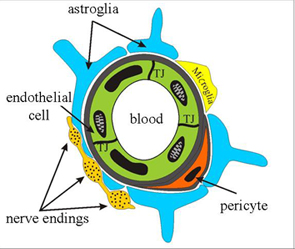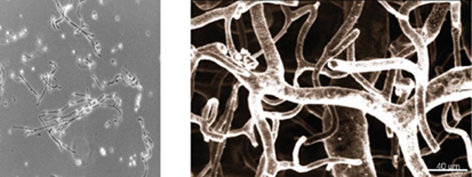

|
The capillaries of the central nervous system forming the blood-brain
barrier (BBB) regulate the
brain microenvironment by restricting ionic, fluid and cell movements
between the blood and the brain, by supplying brain cells with
essential nutrients, and by protecting them from toxic molecules in the
blood. Prof. Ferenc Joó, the first head of the Laboratory of Molecular
Neurobiology and his co-workers created the first in vitro model of the
BBB by the successful isolation of viable brain microvessels more than
35 years ago. Experiments on isolated brain microvessels provided
important data on cerebral endothelial receptors, transporters, and
signaling mechanisms. Continuing their work we have developed new BBB
models by the co-culture of brain endothelial cells, glial cells and
pericytes to study cell–cell interaction in the neurovascular unit,
modulation of BBB permeability in physiological, pathological, and
pharmacological conditions and to screen drug candidate molecules to
predict brain penetration. |
 |
 |
The protection of brain endothelial cells and the improvement of BBB functions in pathological conditions, the exploration of new approaches for drug transport/targeting to brain may have a therapeutical potential in the treatment of central nervous system diseases. |